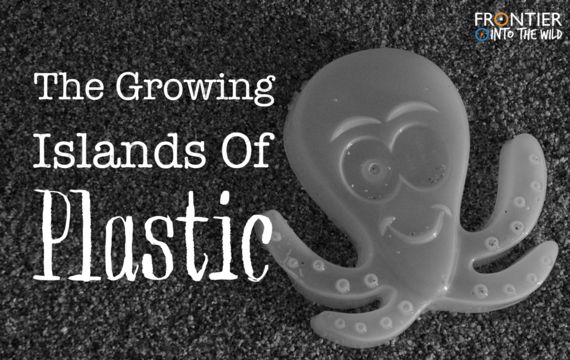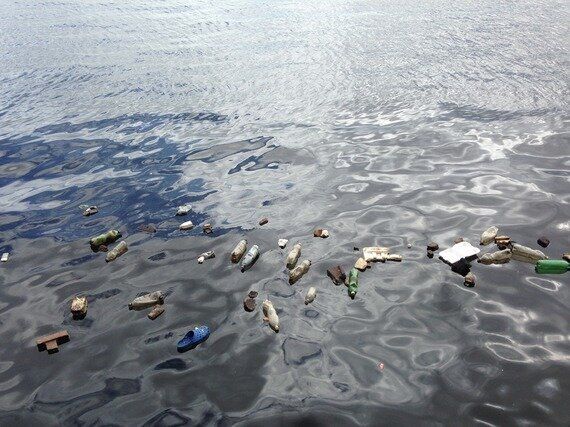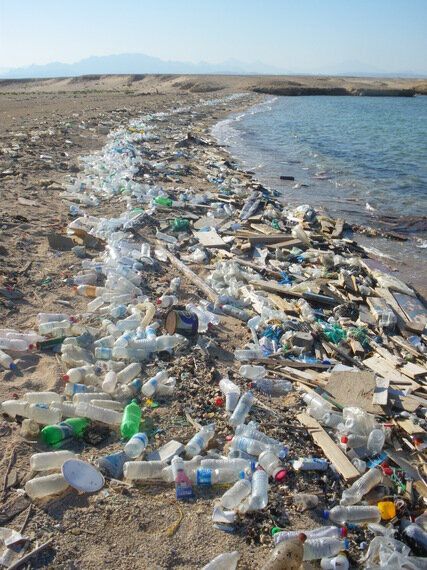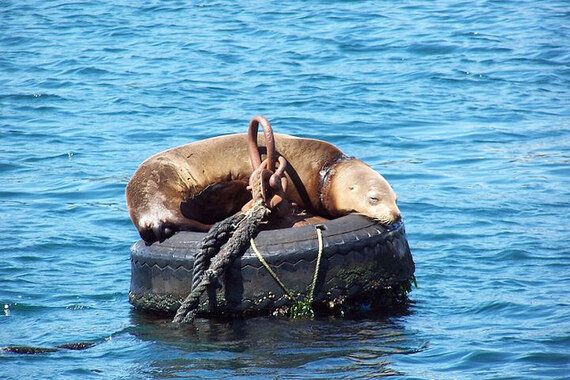
People are becoming increasingly aware of environmental issues, including the pollution of our oceans. The seas are becoming a dumping ground for non-degradable waste and plastic never disappears, and it simply breaks down into smaller and smaller pieces, in this article we explore some of the devastating effects of marine plastic pollution and what can be done about it.
Plastic 'islands'
Plastic is entering our oceans at an alarming rate, but where does it all come from? It is thought that 80% of the plastic in the ocean comes from land, while the other 20% is discarded from ships. Plastic makes its way into the ocean from the land mostly via river systems. Once the plastic has entered the sea, it is carried along with the currents. This often results in the pollutants accumulating in one area.

The great Pacific garbage patch or Pacific trash vortex are the names given to an area of the Pacific ocean where a circular current has caused exceptionally high concentrations of plastic to gather in one large mass, possibly hundreds of thousands of square miles wide. Most of the debris that makes up these patches is small 'confetti-sized' pieces. These 'islands' of plastic cause huge problems for marine life, for example, sheets of debris covering the ocean's surface can block out the sunlight essential for phytoplankton and algae, which are the base of the food chain.
Effects on wildlife
It is estimated that there are over 5 trillion pieces of plastic currently in the ocean, and this number is constantly increasing. This plastic pollution has countless negative effects on marine flora and fauna. Many marine animals are now eating plastic unintentionally; turtles confuse plastic bags with their favourite meal, jellyfish, while seabird stomachs are filling with everything from bottle lids to lighters.

New research also suggests that some species of fish and corals actually enjoy eating plastic, in a study at Duke University in North Carolina, coral polyps were more likely to ingest raw plastic than plastic coated in a microbial film. Similarly, studies on anchovies revealed that these fish like the smell of plastic in salt water, as it is similar to that of krill. There are vast quantities of microplastics in ocean, small enough for fish and coral to ingest. There are concerns that these microplastics may in turn be eaten by humans, if they eat contaminated fish.
Plastic doesn't just cause problems when it is ingested by animals, it can also injure or even kill animals via external damage. Many species can get caught or entangled in larger pieces of plastic debris; this can restrict their growth, make them more vulnerable to predators and even drown them. It's not just larger species that are at risk from entanglement; even tiny plankton can get caught up in plastic microfibers.

Possible solutions
So, what can be done about this growing problem? The truth is it's very difficult and costly to remove plastic debris from the ocean, not to mention a mammoth task. Some small-scale solutions have been devised such as beach cleans and sea bins which collect around 1.5kg of litter per day from areas near the shoreline. Larger-scale ideas have been proposed, such as the Ocean Clean-up, which aims to concentrate the plastic debris and lead it to a collection point, but this is yet to be deployed. However, it's not just about clearing up our seas; it's also about preventing further damage and pollution.
Currently only 12% of all plastic produced worldwide is recycled, meaning that huge amounts of the stuff is being wasted and discarded. People are being urged to reduce their use of disposable plastic items and find more sustainable options. Some of the most common pieces of plastic found on beach cleans are straws, disposable cutlery and plastic bottles, these are all essentially unnecessary items. It's important that people start to live more sustainably to reduce the amount of plastic pouring into the seas.
Plastic patches within the world's oceans are getting larger and more frequent; they are causing damage to individual species as well as entire ecosystems. It's clear that something must be done to combat both the existing problem and people's ongoing attitude to disposable plastics.
By Gabrielle Brooks - Online Journalism Intern
Frontier runs conservation, development, teaching and adventure travel projects in over 50 countries worldwide - so join us and explore the world!
